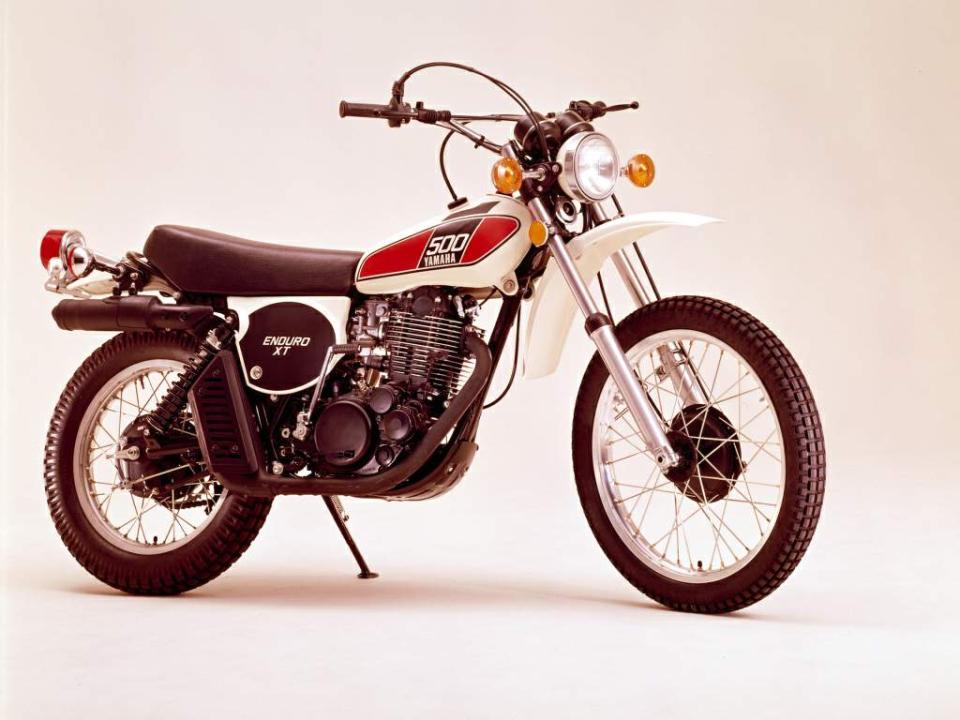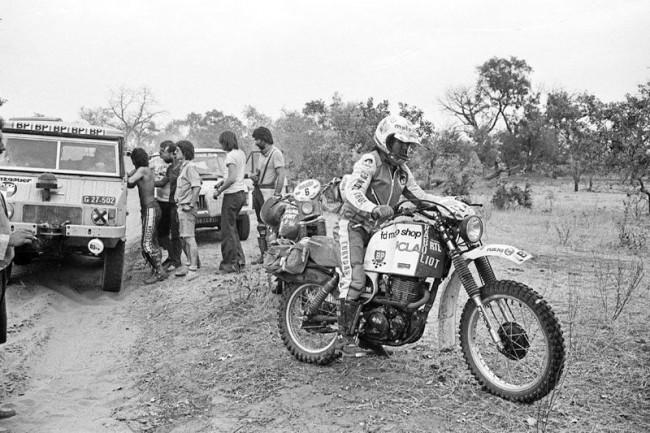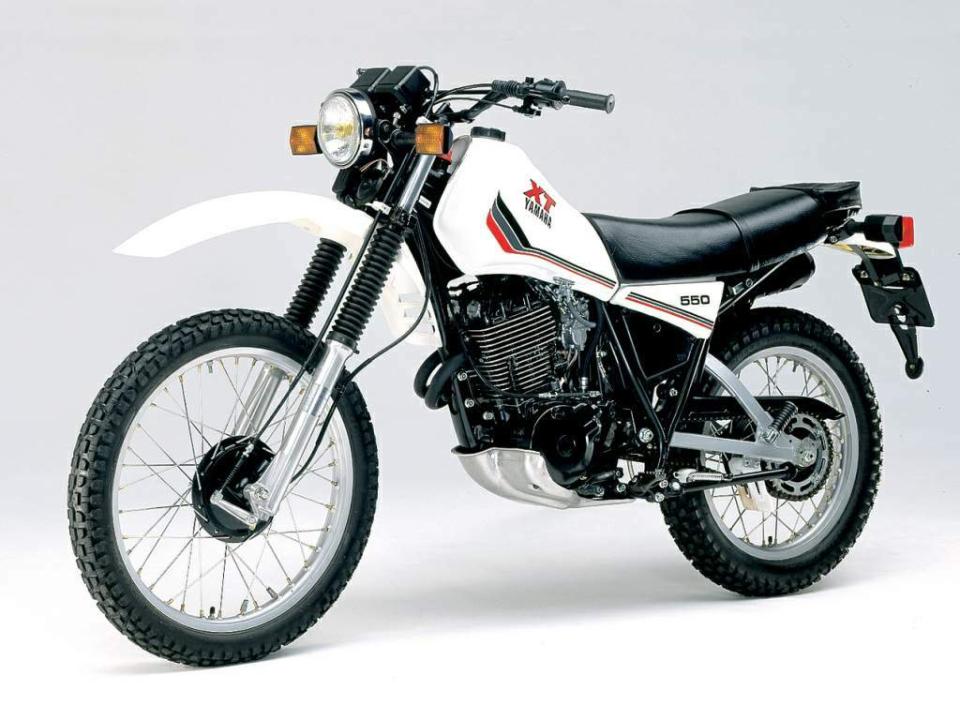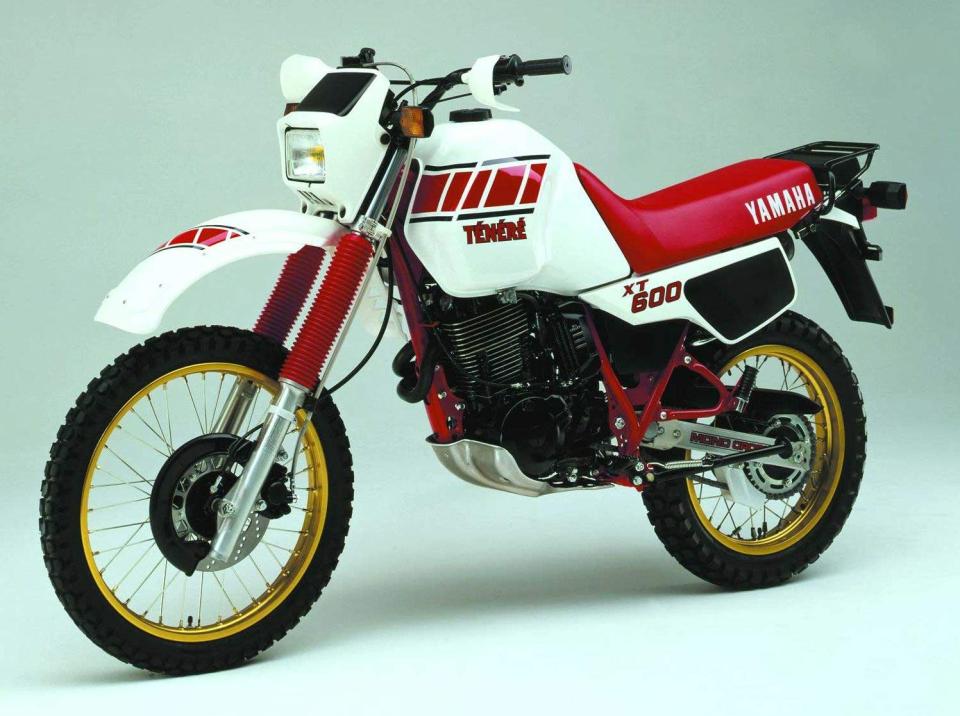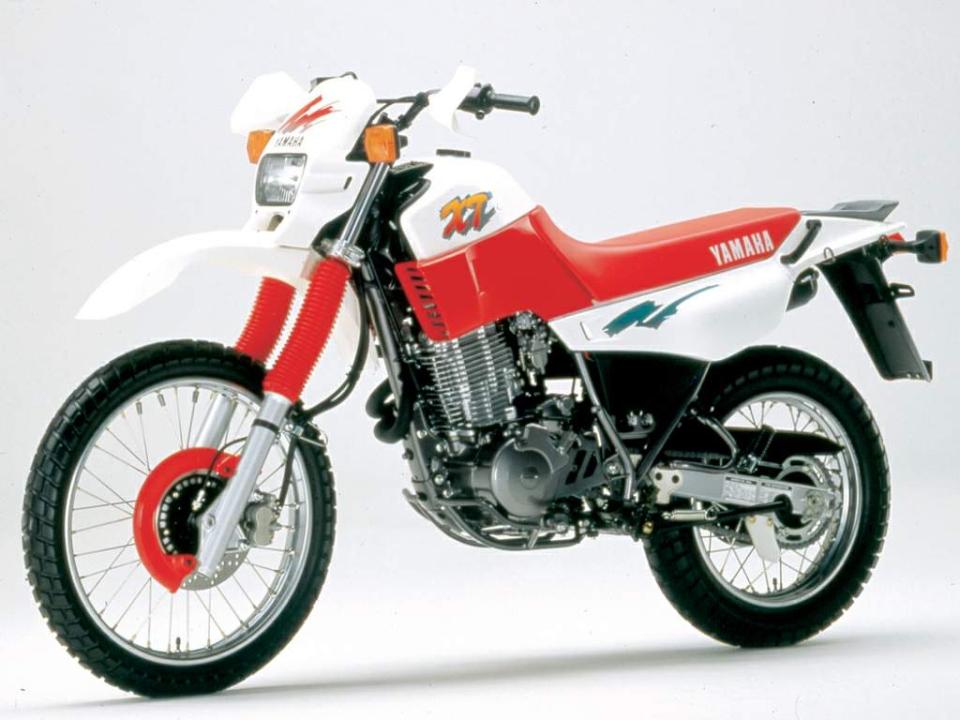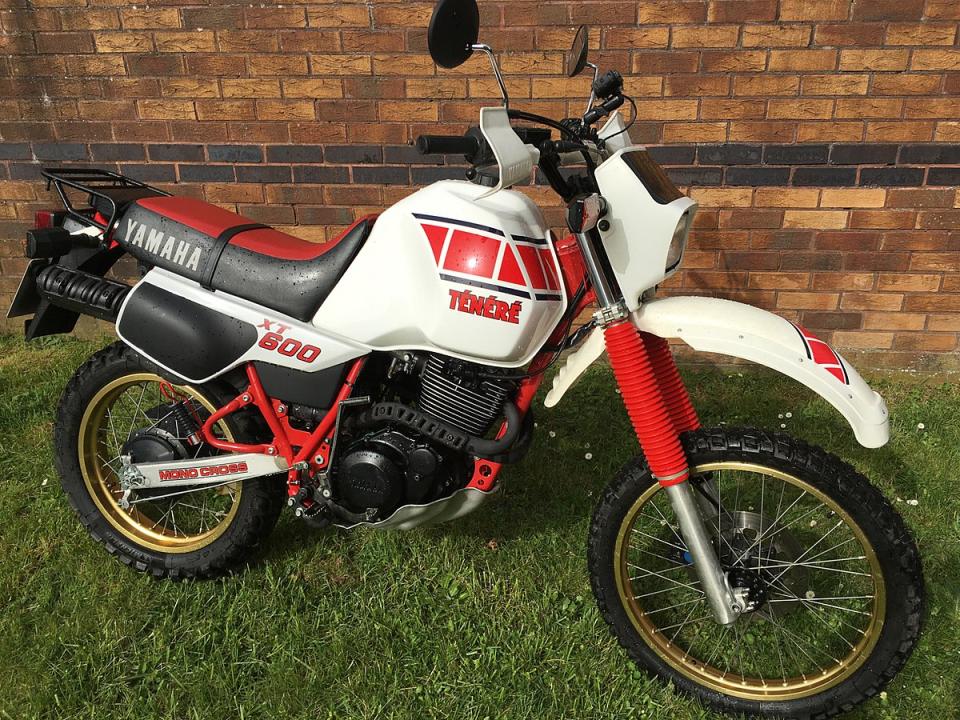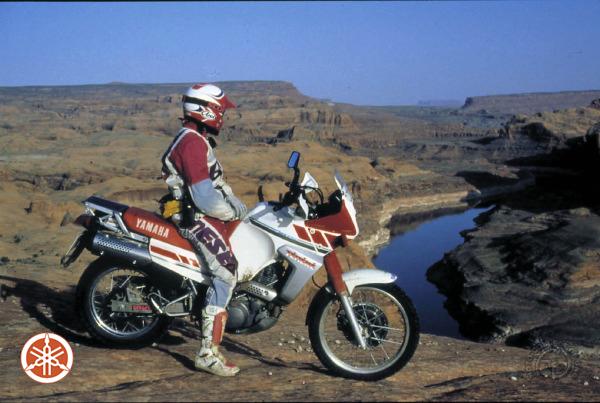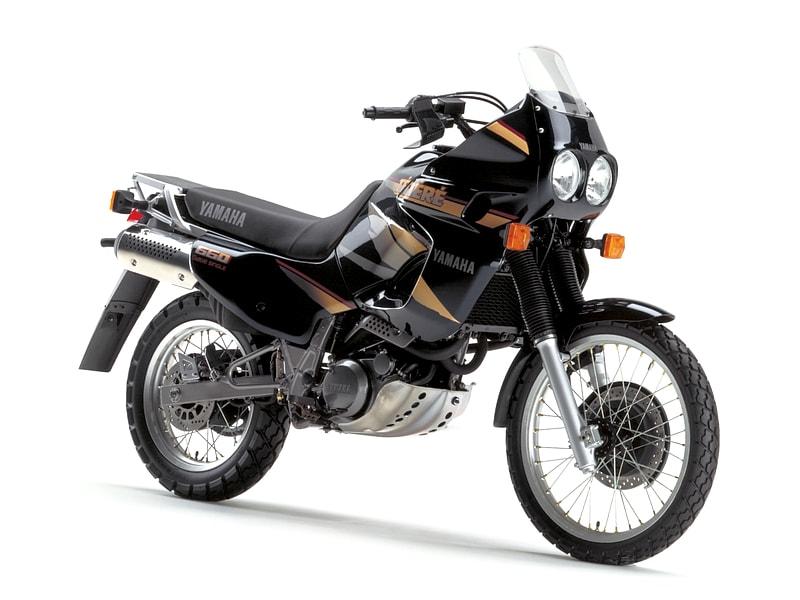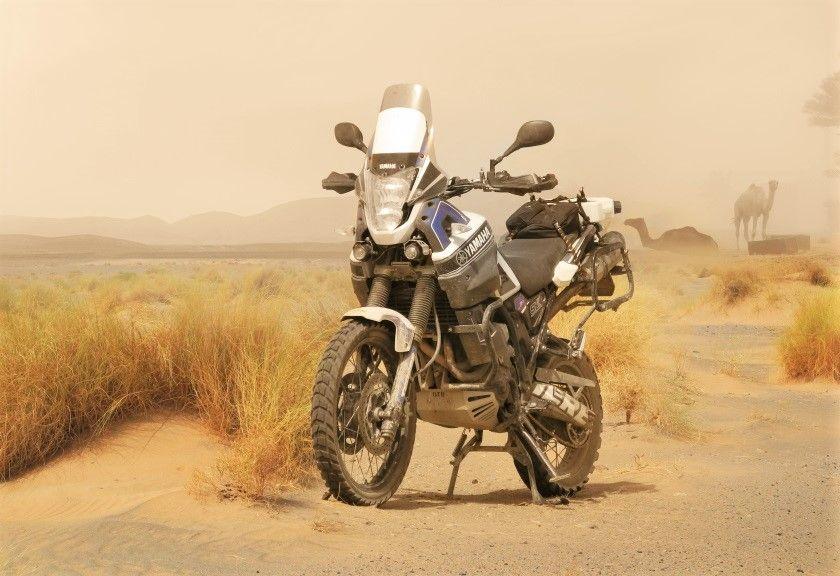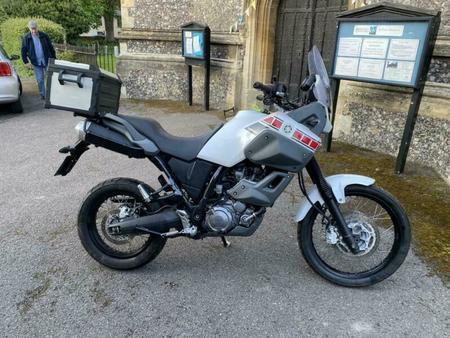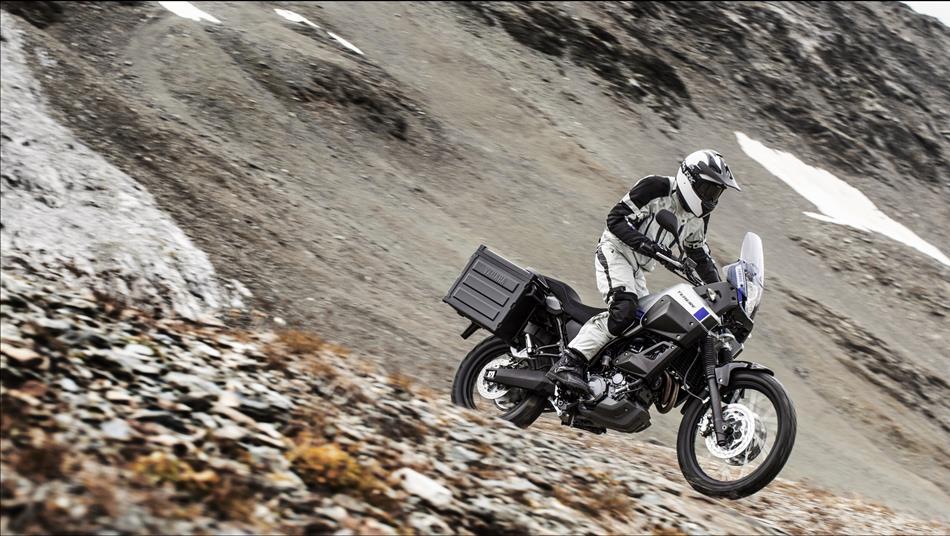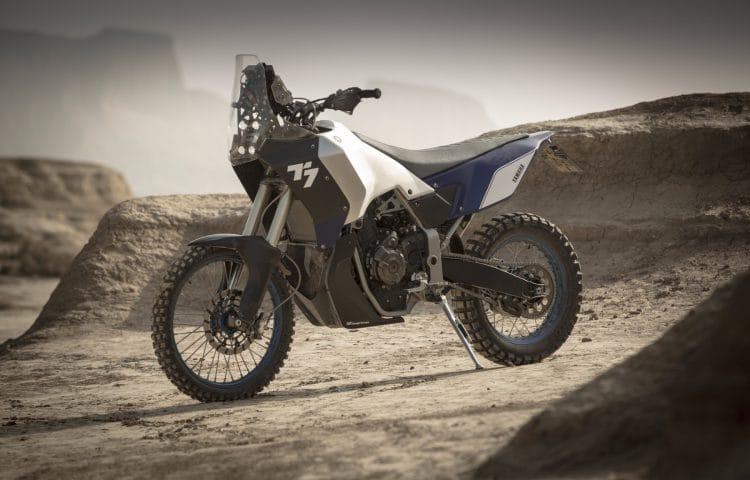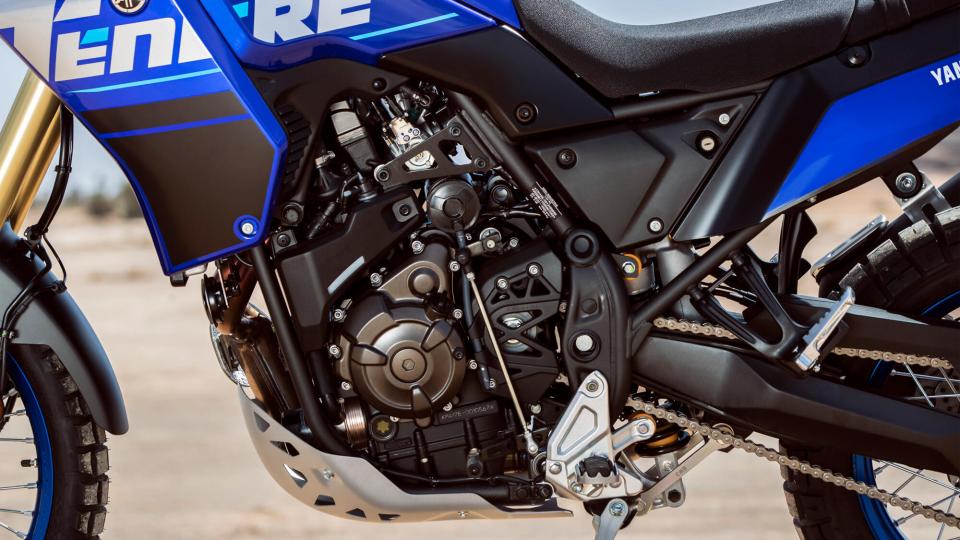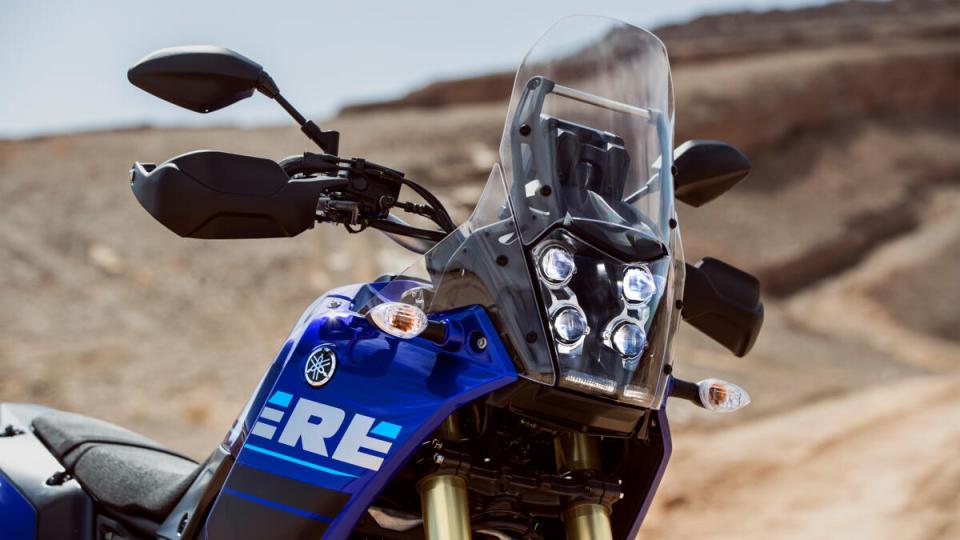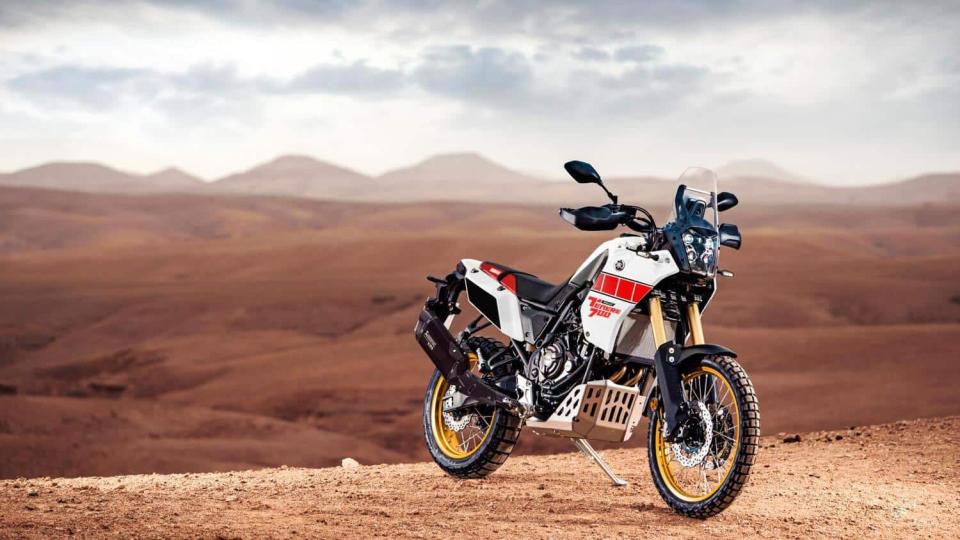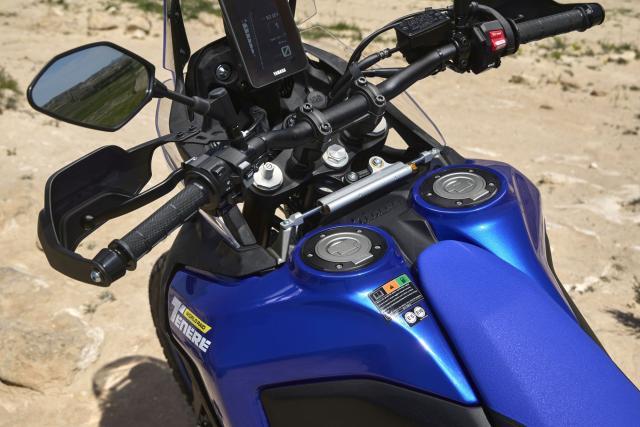The history of Yamaha's Tenere is intimately linked to trails. The Japanese manufacturer developed the XT500 way back in 1976.
The original XT500 model from 1976 - recognizable by the exhaust bend that runs under the block, is a light enduro engine, single-cylinder, a lot of pulling power at the bottom and simple technology, ideal to take you off-road without modifications.
The first Dakar Rally held in 1979, then with a general classification combining cars and motorcycles, was won by Cyril Neveu on a Yamaha XT500. Gilles Comte was second, also on an XT. And Philippe Vassard third on a Honda XL250S.
A year later, the first four places in the final standings were occupied by Yamaha XT500 bikes.
The XT 500 has won the first two editions in 1979 and 1980, due a legendary motorcycle was born!
It wasn't until 1981 that a BMW won, but the XTs remained well represented at the top of the standings.
To this day Yamaha is one of the regular participants in the Dakar Rally: between 1991 and 1998 Stefan Peterhansel gave Yamaha no less than six overall victories.
Partly due to the Dakar Rally, the letters 'XT' became synonymous with off-road driving. Yamaha was thus the trendsetter.
In 1983 Yamaha decided to up the capacity ante and introduced the XT550 and a year later the XT600.
The oversquare engine was rated at an optimistic 45 crankshaft horsepower at 6,500 rpm.
Wheels were a tall 21-incher in front, 17 at the rear.
Rear brake was a drum, the front a disc that was usable in the soft stuff. On the asphalt, however, it required a major handful.
A few of the very early XT600s came with a front drum, but that was quickly dispensed with.
Dry weight was a modest 135 kg, with the gas tank holding an equally modest 9 liter, good for a 160 km of range at best.
Then in 1990 the new XT600E came along, and that is another story.
The Yamaha XT600E is a trail bike first, road bike second – and it shows. Tyres are semi knobbly, suspension is soft, brakes are weedy and the seat is narrow and uncomfortable after any distance.
The world may now have moved on with liquid-cooling, fuel injection and multi-valve systems, but for an honest, trustworthy mud machine that can be driven across deserts, look no further.
In the off-road world, less is more, and the Yamaha XT600E certainly lives up to that mantra. Instruments-wise there’s just one square speedo and a few idiot lights, the Yamaha XT600E's switchgear is definitely on the basic side and there’s not much else worth speaking of.
Due to high demand, the XT 600 K version was introduced. Otherwise structurally identical to the XT 600 E model, the K model featured a kick-starter and ran until 1995.
The reliability of the XT unit was not harmed, as mileage of over 100,000 km and unopened motor are not uncommon.
The 1991 to 1993 version of the XTZ660 has a rectangular front light, while the 1994 and later models had two circular lights, similar to the Honda XRV650 & 750 Africa Twins.
The reliability suffered a bit, the bike was fitted with one of the most uncomfortable seats ever created together with an exhaust, downpipe and spokes which rot combined with poor electrics.
Nevertheless you forget all those things in a blink of an eye when faced with one in the flesh - you feel like you are able to conquer the world. Wide bars make it easy to maneuver and take bends swinging with superior vision of the road ahead - which you need as a combination of poor brakes and fork dive results in uncomfortable deceleration force.
At the time the Honda Dominator was a better bike to spend your hard earned money.
Exact 25 years after the introduction of the XT600 Yamaha introduced a modern version in different flavors, a road-trail version called XT660R, a motard version XT660X and lastly the adventure model baptized the XT660Z Ténéré.
At first glance, the Tenere seems to have a lot of plastic to be a real all-road.
But if you take a closer look, you will see that this is actually very useful. They're not expensive fairing parts, but they're cheap, easy-to-replace plastic that's in easy-to-damage areas.
The Tenere's strong point for off-road driving is especially the enormous ground clearance and the exhaust manifolds are also high. The climb to the saddle is not the least bit; no less than 895 millimeters separate the top of the saddle from the ground.
The disadvantage is that the center of gravity is also high which is a disadvantage in the ruff stuff.
With a good steering angle, this desert rat also manages to turn into a real city sparrow in the city, you turn this motorcycle around so quickly that even the narrowest traffic jam passages cannot bring you to a stop. Because you can’t pierce a desert every day of the week.
The suspension systems, a traditional telescope at the front and an equally conventional monoshock at the rear, offer really long suspension travel.
And for the first time the brakes really are effective, the three discs around are not only exemplary in terms of dosage, but also bite enthusiastically if you ask them to.
The coolant reservoir is easily accessible on the right side, just next to the cylinder. The oil reservoir is in the frame and its filler cap is right next to the headset. If you remove the saddle from the motorcycle, you can immediately reach the battery and also replace the air filter.
So this engine certainly does not deny its origins; Rally motorcycles need easily accessible components due to frequent inspections during the races, which is of course also a bonus for the average motorcyclist. The dashboard is also conceived in the same spirit. It is placed high and therefore pertinently in sight of the pilot. There is also a relatively large open space between the headset and the counters, the perfect place to mount a navigation system or a full-on navigation tower for the die-hard fan.
For 2011, Yamaha will release a version in addition to the regular version of this model that will be equipped with a switchable ABS.
Unfortunately, the Euro4 standard also meant the end for Yamaha's 660 Ténéré and Yamaha introduced the T7 concept at the 2016 EICMA. This concept morphed into the Tenere 700 every love and knows today.
It is striking that Yamaha's youngest member of the Ténéré bloodline does not differ that much from the pre-production model.
The engine block does break with the one-cylinder tradition, because the well-known CP2 block is used here. But still simplicity celebrates the scepter. The two-cylinder crossplane block has no mappings or other additional electronic support.
The T7 is not impressive for sheer power, but because everything is so easy.
On the public road you will be amazed at the ease with which the bike completes a series of consecutive turns, yet there is a 21 inch front wheel. Off road it is even more impressive if possible.
187 kg dry on and 204 kg roadworthy, with the surprisingly low weight in the lead makes this the lightest mid-range adventure motorcycle.
The suspension is good, until you start looking for extremes. Then the standard setting is a bit too soft. But both the 43mm front Kayaba and monoshock are fully adjustable.
An engine guard, the gold-colored rims, the higher rally seat, the sporty grips, radiator protection and Yamaha's Speed Block graphics make the Rally Edition a different bike than the standard version. This Rally Edition was introduced in 2020 and two years later Yamaha comes with the Tenere 700 World Raid, a hardcore version that is mainly aimed at off-road use.
The most striking adjustment is of course the enormous 23 liter petrol tank with two filling openings. Apparently they were jealous of KTM. Cool to see, that double fuel cap, for which the tank has also been made much wider. In addition, a different seat, longer suspension travel at the front (23 cm.) and rear (22 cm.), Öhlins steering damper, larger steps, radiator protection, floor pan, different air filter and ABS with three positions: on, only on the front wheel and completely off.
In terms of appearance, there is really something, the wider fairing gives the motorcycle much more status as an adventure machine. The WR looks fierce.
The 700 remains a middle class and therefore not a 1200, 1250 or 1290.
You will sometimes find the limit on the asphalt, but that handyness is a plus in the sand. Hardcore off-road drivers, real adventurers and world travelers know what to choose. The Tenere 700 platform is therefore an ideal way to get to know the most beautiful roads and non-roads, with this real allroad there is no route that you could not handle.

